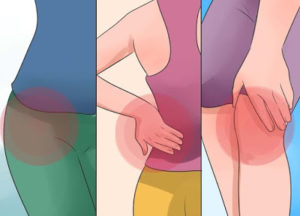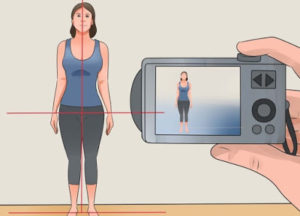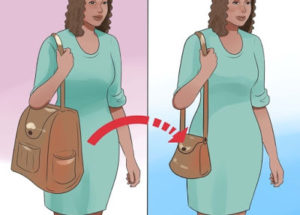The Significance of Hip Alignment in Maintaining a Healthy Body
Maintaining proper hip alignment is crucial for a healthy body and overall well-being. The hips play a significant role in supporting our body’s weight, providing stability, and facilitating smooth movement. When the hips are misaligned, it can lead to various issues and discomforts that can impact our daily lives.
The importance of hip alignment cannot be overstated. A properly aligned hip joint ensures optimal function and prevents unnecessary stress on surrounding muscles, tendons, and ligaments. It allows for balanced weight distribution, reducing the risk of injuries and chronic pain in the lower back, knees, and ankles.
Hip misalignment can occur due to various factors such as poor posture, sedentary lifestyle, repetitive movements, or even injury. When the hips are out of alignment, it can lead to imbalances in the body’s kinetic chain. This imbalance affects not only the hips but also other areas such as the spine and legs.
Addressing hip misalignment is essential for maintaining a healthy body. Regular exercise routines that focus on strengthening the muscles around the hips can help improve hip alignment. Stretching exercises targeted at increasing flexibility in the hip joint also play a vital role.
By prioritizing proper hip alignment through exercises and mindful movements, individuals can experience improved posture, reduced pain levels, enhanced athletic performance, and increased overall mobility.
In this section on “The Significance of Hip Alignment in Maintaining a Healthy Body,” we will delve deeper into understanding why hip alignment matters so much for our physical well-being. We will explore common causes of hip misalignment as well as effective strategies to restore balance to this crucial joint.
Join us as we uncover valuable insights into maintaining optimal hip health for a stronger body and an active lifestyle.

—
Common Signs and Symptoms of Misaligned Hips
Are you experiencing persistent hip pain or lower back discomfort? It could be a sign of misaligned hips. Understanding the common signs and symptoms of hip misalignment is crucial for identifying and addressing this issue.
One of the most noticeable signs of misaligned hips is hip pain. This pain may manifest as a dull ache or sharp, shooting sensations in the hip joint. Additionally, individuals with misaligned hips often experience lower back pain, as the imbalance can put strain on the muscles and joints in that area.
Another indicator of hip misalignment is pelvic tilt. This occurs when one side of the pelvis is higher or tilted forward compared to the other side. Pelvic tilt can lead to an uneven gait, difficulty maintaining balance, and even contribute to issues such as sciatica.
If you are experiencing any combination of these symptoms, it is important to consult with a healthcare professional who specializes in musculoskeletal health. They can assess your condition, diagnose any potential hip misalignment, and recommend appropriate treatment options.
By recognizing these common signs and symptoms of misaligned hips, you can take proactive steps towards seeking relief and restoring proper alignment to improve your overall well-being. Don’t let discomfort hold you back – address your hip alignment concerns today!
—
The Impact of Hip Misalignment on Posture and Movement Patterns
Hip misalignment can have a significant impact on both posture and movement patterns. When the hips are not properly aligned, it can lead to a range of posture problems that affect the entire body.
One of the most common effects of hip misalignment is the development of poor posture. As the hips shift out of their optimal position, it can cause an imbalance in the muscles surrounding them. This imbalance can result in a forward or backward tilt of the pelvis, leading to an exaggerated curvature in the spine. This misalignment puts strain on various parts of the body, including the lower back, neck, and shoulders.
In addition to posture problems, hip misalignment can also disrupt normal movement patterns. The way we walk is greatly influenced by how our hips function. When there is an imbalance or misalignment in the hips, it can lead to walking gait issues such as limping or favoring one side over the other. These abnormal movement patterns not only impact our ability to walk comfortably but also increase the risk of developing further musculoskeletal issues.
Furthermore, muscle imbalances are commonly associated with hip misalignment. When certain muscles become overactive or tight while others weaken or lengthen due to improper alignment, it creates an imbalance that affects overall movement efficiency and stability.
Addressing hip misalignment is crucial for maintaining good posture and preventing long-term musculoskeletal problems. Seeking professional guidance from physical therapists or chiropractors who specialize in postural correction can help identify and address these issues effectively through targeted exercises and adjustments.
By understanding how hip misalignment impacts posture and movement patterns, individuals can take proactive steps towards improving their overall well-being and reducing discomfort caused by these imbalances.
A common cause of low back pain, and even knee pain, is misalignment of the hips. What can cause that misalignment? Well, there are a few things actually. First, you could have a leg length difference. There are two types of leg length issues: anatomical and functional. An anatomical short leg cannot be changed. Your body just grew that way. Maybe you had an injury to a growth plate in your leg as a child, or had a devastating injury as an adult like breaking your femur, or maybe your legs just grew in at different lengths. A functional short leg results from an unstable pelvis that continues to tip anterior or posterior (front or back). Most anatomical leg length issues can be corrected with the use of a heel lift or custom orthotic, while a functional short leg can be corrected with consistent chiropractic care. Here are some ways you can determine exactly what is causing your pain…
Step 1: Confirm your hips are misaligned
Go see a chiropractor and have x-rays taken of your low back. These x-rays will show both an anatomical and a functional leg length discrepancy if one or both are present. This information will help the doctor narrow down what needs to be done to correct the problem.
Step 2: Assess your pain
Hip misalignment tends to cause pain in one or more of three areas:
– Hip joint: when the hips are misaligned, more stress can be added to the side that has dropped which can decreased the joint space of that hip causing pain. – Low back: misalignment of the hips or pelvis is often associated with hyperextension of the low back, tightness in the muscles of the low back and weakness of the abdominal muscles. – Knee: stress is added to the knee when the hips or pelvis are misaligned causing the body weight to shift primarily to one side. When that happens, the added weight can cause strain on the medial (inside) knee and cause pain.

Step 3: Assess Your Posture
Here at Pro Chiropractic, we have state of the art technology to help screen your posture and point out any abnormal areas. This tool helps the doctor determine where you may be out of alignment and give us clues on how to fix it from the ground up. The posture screen shows misalignments at the ankles, hips, ribcage, shoulders, and head when viewing from the front. It will also analyze when viewing your profile. It will tell us how far you may be bearing your weight forward or backward which can cause excess pressure on the different regions of the body.

Step 4: Figure out what can be causing the misalignment and correct it
- – Stretch: after a brisk warm-up, make sure you thoroughly stretch the quads, hamstrings and glutes to make sure your muscles are on an even playing field before you start your work out. If you don’t stretch properly, you can cause overcompensation issues during your workout that may lead to hip misalignment.
- – Posture: try to be conscious of your posture. If you notice you’re slouching, activate your core and sit up straighter. This will help realign your entire body…as well as your hips.
- – Heavy bags: wearing a heavy shoulder bag on one side can lead to body shifts which can throw off your hips and pelvis. Switch to a double strap backpack or downsize your bag and the contents.
- – Footwear: not wearing the right shoes or not having enough support for your feet will definitely lead to hip misalignment, especially if you have a leg length issue. See your chiropractor about getting a custom fit orthotic to help keep everything aligned.
- – Chiropractic care: receiving consistent chiropractic care will set you on a path to correcting your misalignment for the long term…not just hip misalignments, but full spine misalignments. Chiropractic care is relatively painless and inexpensive (compared to chronic care with a medical doctor). Call today to find out for yourself!
